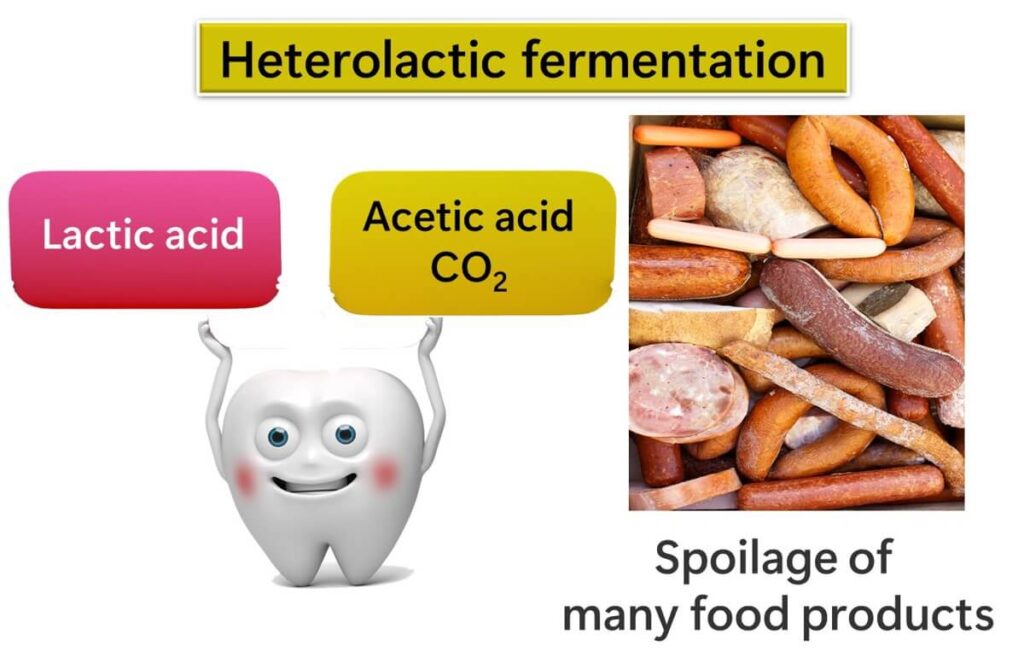As I mentioned in my previous article, one way to distinguish lactic acid bacteria from Gram-positive bacteria is through a catalase-negative reaction. Have you ever wondered why lactic acid bacteria lack catalase and instead possess something called NAD peroxidase? To explain this, we first need to understand the unique metabolic feature of lactic acid bacteria.
The Unique Fermenting Abilities of Lactic Acid Bacteria
To discuss the intriguing topic of why lactic acid bacteria, or lactic, do not possess catalase, and to understand this, we must first grasp the metabolic uniqueness of these bacteria, which predominantly engage in lactic acid fermentation.
In general, microorganisms, when exposed to conditions where oxygen is present, break down sugars into carbon dioxide and water through a process known as the Krebs cycle (also referred to as the citric acid cycle or TCA cycle). However, under oxygen-deprived conditions, they rely solely on glycolysis to derive energy and produce intermediate substances such as acetic acid and lactic acid.
For a more comprehensive explanation of the fundamental concepts behind microbial fermentation and respiration, I recommend referring to the blow article in this blog, which provides a clear overview.
Understanding Gram-Negative Bacteria: The Role of the OF Test
One of the remarkable features of lactic acid bacteria is that regardless of the presence or absence of oxygen in their environment, they exclusively undergo lactic acid fermentation. Lactic acid bacteria do not engage in energy production through the electron transport chain, meaning they do not utilize the Krebs cycle. Instead, their growth is primarily fueled by lactic acid fermentation. This metabolic peculiarity is unique to lactic acid bacteria.
It should be noted that some lactic acid bacteria do possess the genes for enzymes related to the electron transport chain (Duwat et al., 2001). Additionally, in certain conditions where exogenous heme (as lactic acid bacteria are unable to synthesize heme themselves) is supplied, activation of respiratory activity via the Krebs cycle under oxygen-rich conditions has been reported in some lactic acid bacteria (Pedersen et al.,2011). However, this is a rare phenomenon observed under specific circumstances involving heme supplementation and does not represent a general metabolic trait of lactic acid bacteria.
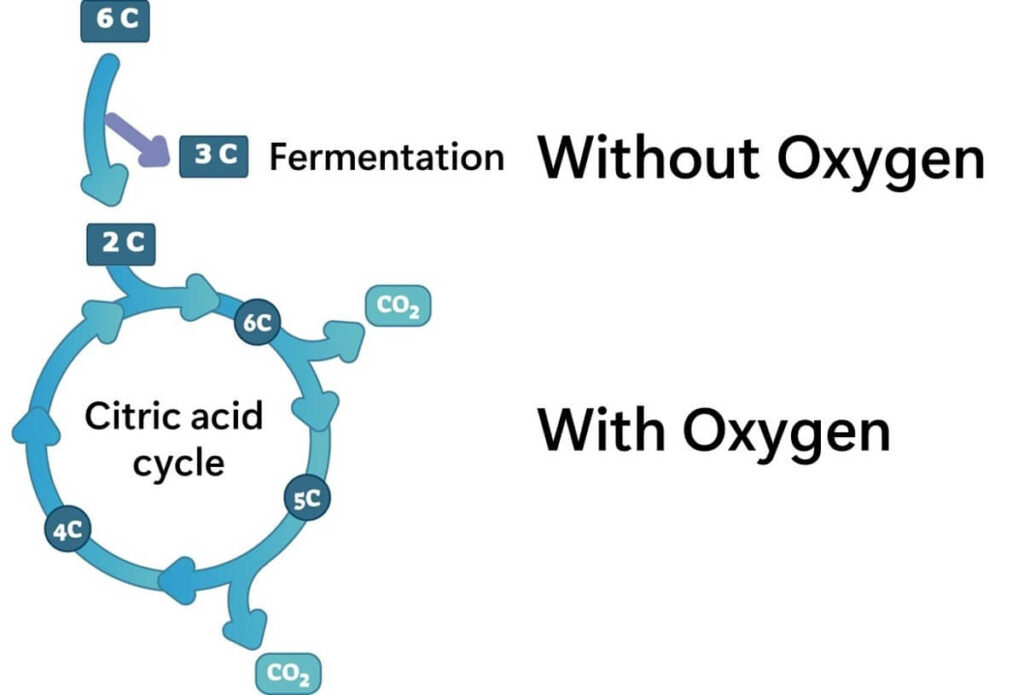
This characteristic is incredibly handy when it comes to using lactic acid bacteria in these products. You see, the unique quality of these bacteria is that they exclusively undergo lactic acid fermentation, whether there's oxygen in the environment or not.
To put it in human terms, think of lactic acid bacteria as valuable employees for companies in the fermentation food industry. The reason they're so valuable is that, just like a dedicated worker, they consistently deliver high-quality results, which, in their case, means lactic acid fermentation. It doesn't matter if there's oxygen or varying oxygen levels; they reliably carry out their task.

Unlike lactic acid bacteria we talked about earlier, ordinary facultative anaerobic bacteria take different metabolic pathways based on the availability of oxygen. In other words, their performance varies depending on their environment.
If we were to compare these bacteria to humans, they would be like employees with inconsistent work ethics, much to the dismay of a lactic acid bacteria company. You see, these general bacteria tend to have unstable work results, just like how they produce different products (metabolites) based on their surroundings.
Now, if lactic acid bacteria were to switch from fermentation metabolism to respiration metabolism based on oxygen conditions, it would result in inconsistent lactic acid production, making them unsuitable for use in fermented foods.

Why do lactic acid bacteria only perform lactic acid fermentation with or without oxygen? - A Biological Mystery
It seems biologically puzzling because, with ample oxygen available, they could potentially yield more energy by utilizing the citric acid cycle. However, lactic acid bacteria don't opt for this route, and this behavior warrants our curiosity.
To understand this, we'll touch on a concept that might seem a bit more advanced, known as overflow metabolism.
You see, to establish the citric acid cycle, a plethora of enzymes are required. While it's true that microorganisms can gain a substantial amount of energy by constructing this cycle, the downside is that it's quite laborious. Building these pathways demands the synthesis of numerous enzymes, which can be quite a task.
On the other hand, in the case of fermentation metabolism, the energy yield is indeed lower. However, the metabolic pathways are relatively straightforward, requiring fewer enzymes to assemble.
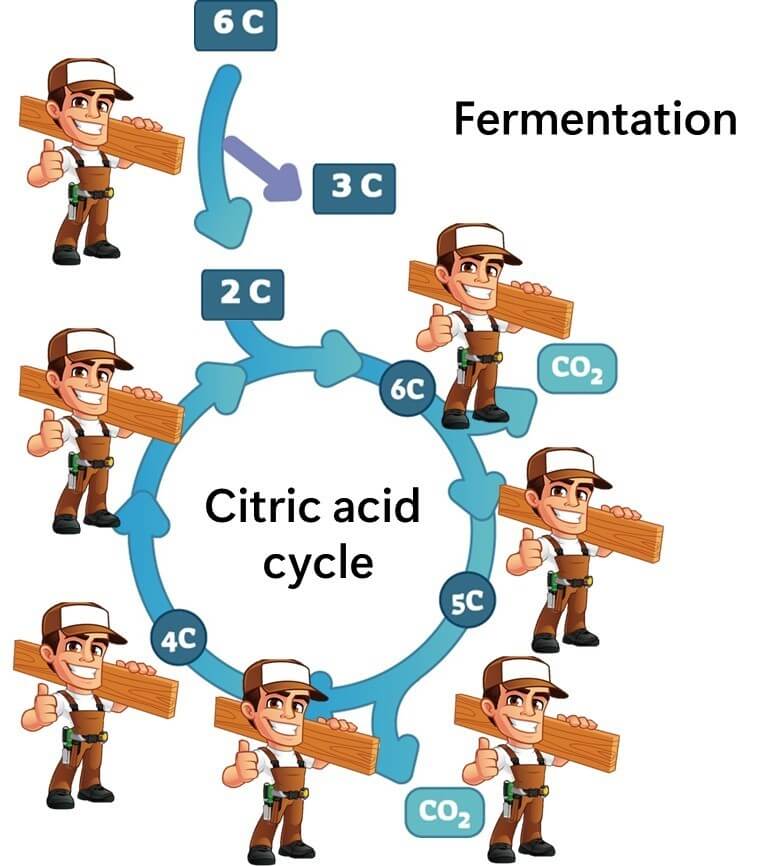
Even E. coli, when faced with a rich glucose environment and an immediate need for rapid growth, sometimes opts for fermentation metabolism, even when oxygen is available(Basan et al., 2015).
Take a look at the graph below. It plots the total protein content for enzyme synthesis on the horizontal axis and the ATP production from the cell on the vertical axis. As you can see, fermentation metabolism is more efficient in terms of ATP production per enzyme protein compared to the metabolic pathway utilizing the citric acid cycle.
In other words, while the energy production system using the citric acid cycle may yield a larger overall energy amount, the process of creating the enzymes necessary for it is quite labor-intensive. Therefore, the energy production per enzyme is not as high.
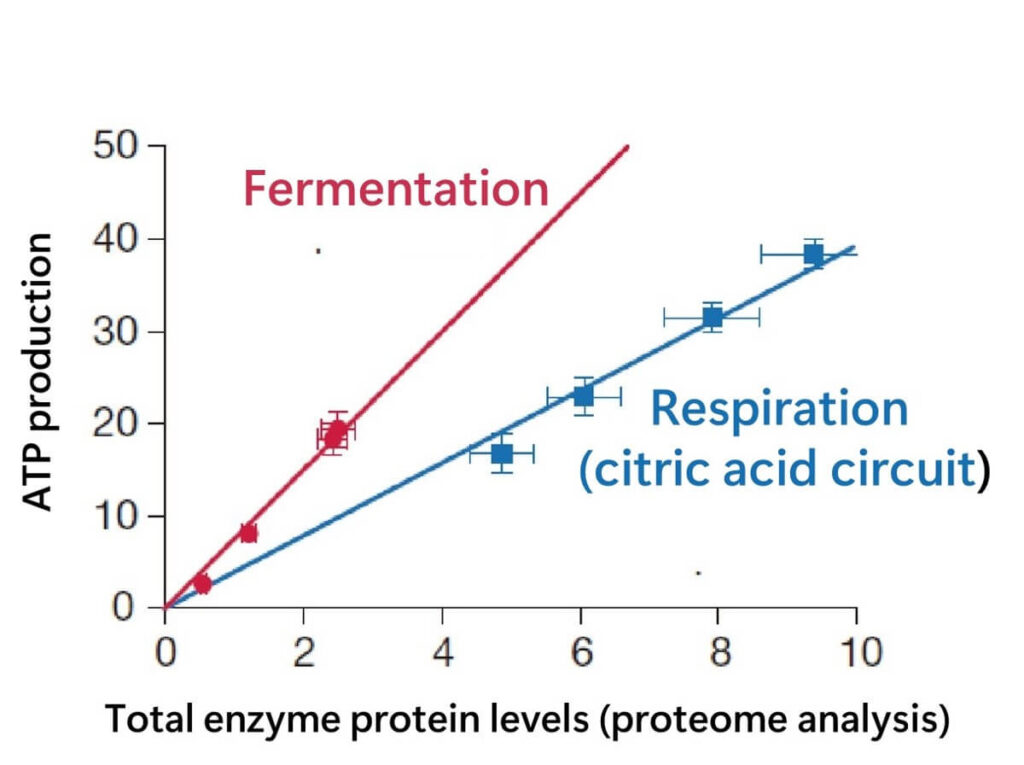
The figure above was drawn by the author from data in the following literature.
Let's shift our focus to fermentation metabolism now. While this pathway generates a smaller amount of energy compared to other metabolic processes, it boasts a remarkable efficiency when it comes to the energy production per enzyme.
In simpler terms, even though fermentation doesn't produce as much energy overall, it does so with fewer enzymes, making each enzyme more efficient at energy production.
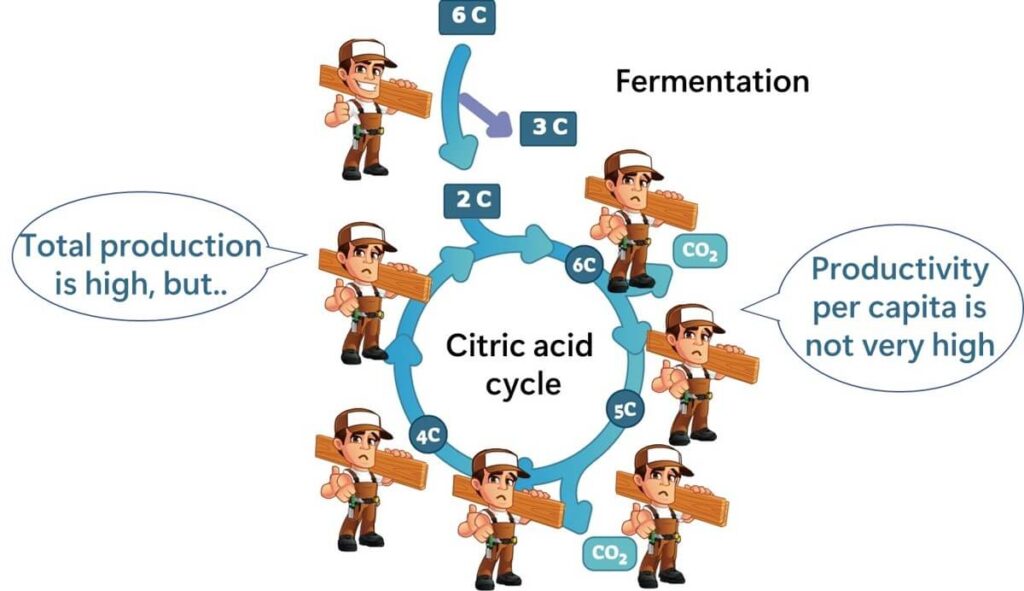
Beyond Lactic Acid Bacteria: Fermentation with Oxygen
It turns out that the preference for fermentation metabolism, even in the presence of oxygen, isn't unique to lactic acid bacteria.
For example, yeast, which carries out alcohol fermentation, can adopt a similar metabolic pattern under certain conditions. In yeast, when glucose is scarce and there's an abundance of oxygen, it breaks down glucose into carbon dioxide and water through the Krebs cycle, generating ATP. However, when there's plenty of glucose available, yeast may choose alcohol fermentation, even in oxygen-rich environments.
This phenomenon, where rapidly multiplying cells opt for fermentation despite the presence of oxygen for energy production, is known as overflow metabolism. It's not limited to lactic acid bacteria; even bacteria like E. coli may forego the citric acid cycle when there's an abundance of glucose, and temporarily resort to fermentation for growth.
Furthermore, though not bacteria but human cancer cells, they, too, are known to proliferate using only lactate fermentation, even in the presence of oxygen. This metabolic phenomenon in cancer cells is called the Warburg effect.
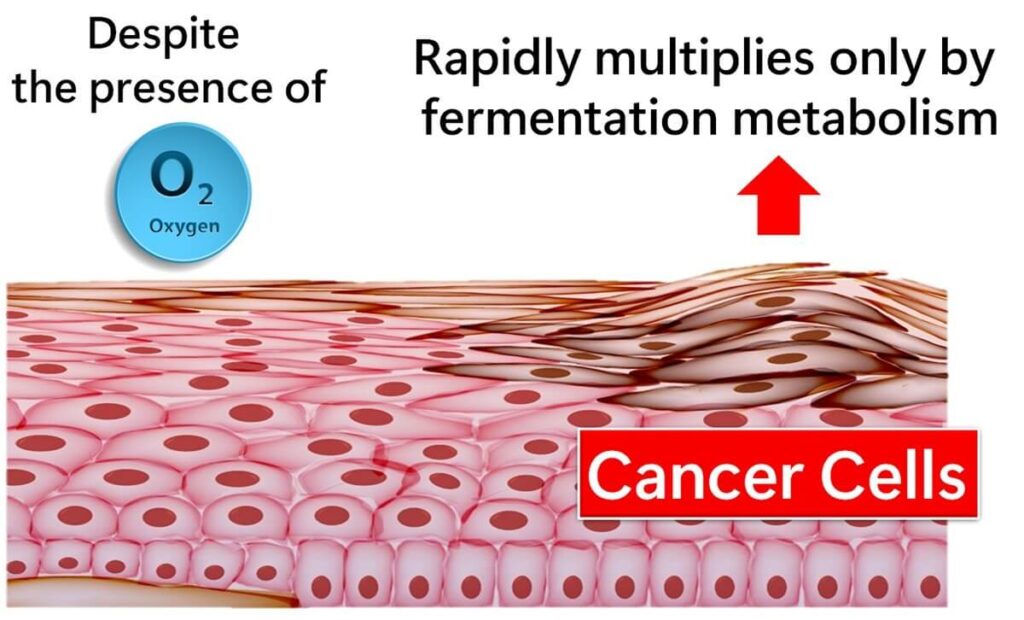
Summary of Overflow Metabolism
Overflow metabolism is a metabolic strategy employed by cells when they produce energy through fermentation, even when oxygen is available. In other words, it's like a backup plan for our cells. They don't care if there's oxygen around or not. What really matters to them is how much glucose, their primary fuel source, is available in their environment. Depending on that, they decide whether to go through the Krebs cycle or opt for fermentation.
Now, in the case of fermentation metabolism, although the energy produced is relatively low, it's a quick and dirty way for cells to get energy using fewer enzymes. Think of it as grabbing a quick snack while rushing out in the morning, just like we sometimes do with breakfast. It might not be the most efficient way in terms of ATP production, but if there's plenty of glucose around, it can actually be advantageous for the cell.
To put it in everyday terms, think of lactobacilli, those friendly bacteria in yogurt. They are experts at overflow metabolism, just like a backup power source kicking in when needed.

So, why do microorganisms employ this strategy of overflow metabolism? Well, it's a game plan that microbes resort to only when there's an abundance of energy sources like glucose in their environment. I'll delve deeper into this in another section, but for now, let's understand that lactic acid bacteria, for instance, are a group of microorganisms adapted to environments rich in nutrients. In simple terms, they don't need to extract every last bit of energy from glucose or other sources because there's plenty to go around. It's like having a quick snack; they're satisfied with that.
However, it's important to note that overflow metabolism is a short-term cell proliferation strategy. It comes into play when there's an ample supply of glucose, and the environment allows for a bit of wastefulness. On a longer timescale or in environments where glucose isn't abundant, it's more advantageous for cells to acquire energy through the citric acid cycle. This allows them to proliferate in larger numbers. In standard nutrient agar for general bacterial growth, you'll see most bacteria thriving and forming substantial colonies. But lactic acid bacteria are different; they often form very small colonies or, in many cases, don't form colonies at all.
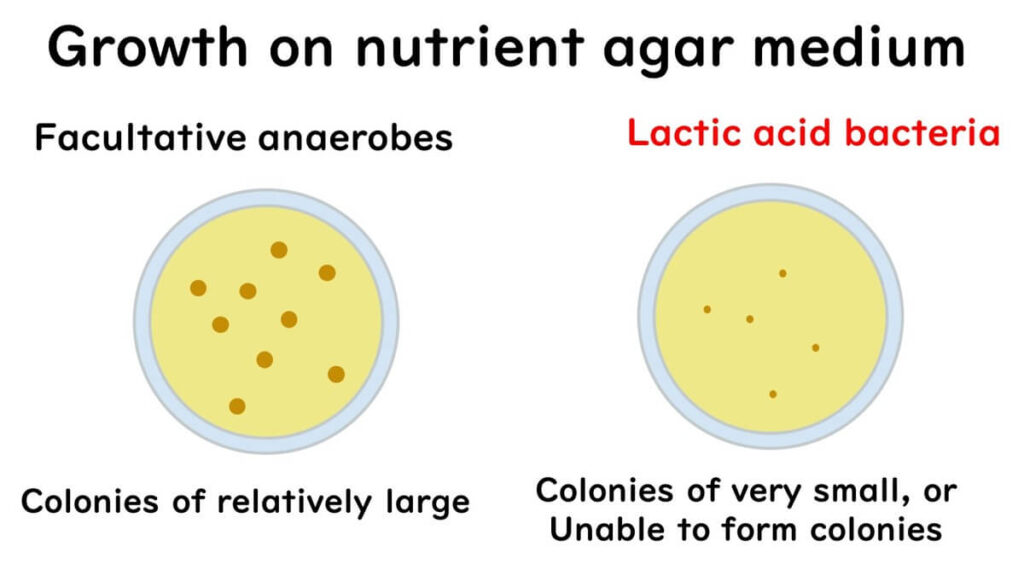
You see, lactic acid bacteria can only thrive in environments rich in nutrients. This is like their secret weakness – they're specialists in overflow metabolism.
If we take a step back and look at the history of life on Earth, we can see a fascinating pattern. In the early days when the primordial seas were abundant with organic matter, it's believed that primitive cells primarily relied on overflow metabolism. But as organic resources began to dwindle, something remarkable happened. Despite the increased cost, complex pathways like the Krebs cycle evolved to extract every ounce of energy from glucose.
In other words, lactic acid bacteria are like the connoisseurs of a world where glucose and other nutrients are plentiful. They've evolved to constantly graze on these resources, just like someone who always snacks, because they can. It's their way of life.
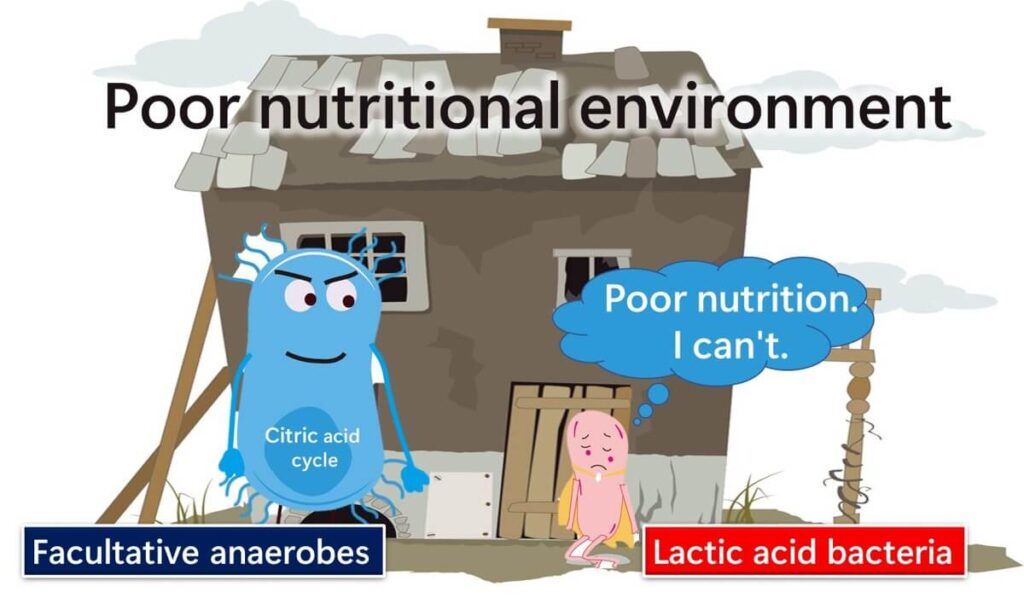
Please see the following article for an explanation of the culture medium of lactic acid bacteria.
Let's understand the medium components of lactic acid bacteria culture media.
Why don't lactic acid bacteria have heme?
Now that we've covered the basics, let's address a fascinating question: Why don't lactic acid bacteria produce catalase?
As we've discussed, lactic acid bacteria don't rely on the citric acid cycle or the electron transport system for their growth. These are fundamental pathways related to microbial respiration and energy production. If you're interested in diving deeper into these topics, I recommend checking out another article.
Understanding Gram-Negative Bacteria: The Role of the OF Test
Now, here's where things get interesting. The electron transport system in lactic acid bacteria contains a component called cytochrome, which has a heme structure as a cofactor. If you want to learn more about cytochrome and its role, you can explore another resource.
On the other hand, catalase, just like cytochrome in the electron transport system, also relies on a heme structure as a cofactor. In other words, both catalase and the cytochrome in the electron transport system share a common feature – they depend on heme as a cofactor.
So, to answer the question: lactic acid bacteria don't produce catalase because the presence of heme, which is essential for catalase function, is already dedicated to other crucial processes like the electron transport system. It's a matter of resource allocation and adaptation to their specific metabolic strategy.
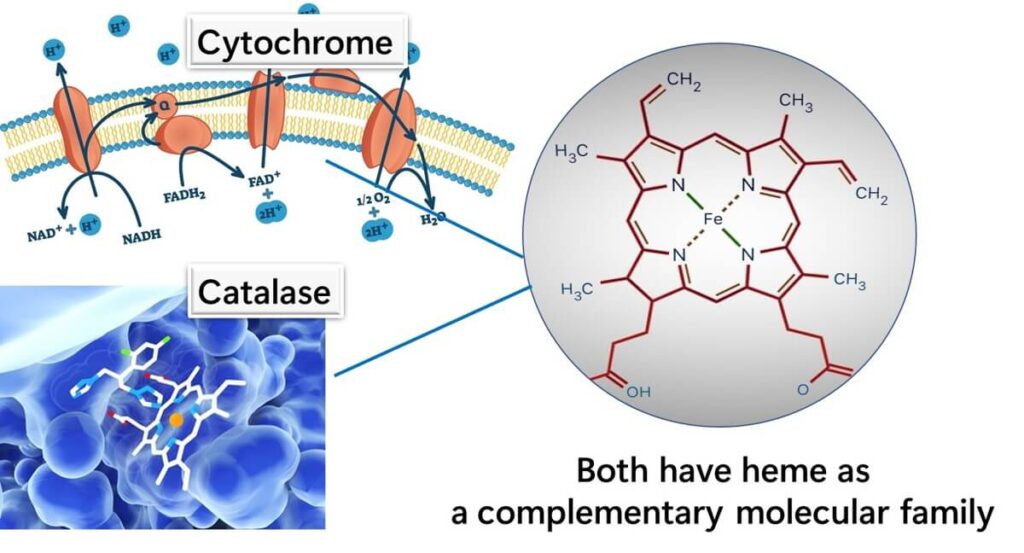
As mentioned earlier, lactic acid bacteria exclusively rely on lactic acid fermentation for their growth. In simple terms, they don't use the electron transport chain. Now, let's dive into why this matters.
You see, in the world of bacteria, heme structures are primarily used within the electron transport chain. Lactic acid bacteria, on the other hand, don't utilize this chain at all. Because they steer clear of the electron transport chain, they don't possess the capability to produce heme.
And here's the key point: heme is essential for the synthesis of catalase, an enzyme that breaks down hydrogen peroxide. Since lactic acid bacteria can't synthesize heme, they can't create catalase either.
Instead, lactic acid bacteria have come up with an alternative defense mechanism. Rather than relying on heme, they use another cofactor called FAD, which stands for flavin adenine dinucleotide. They incorporate FAD into an enzyme called NADH peroxidase to protect themselves from hydrogen peroxide.
So, in summary, lactic acid bacteria don't produce heme because they don't use the electron transport chain, which is where heme structures are typically employed. This, in turn, means they can't make catalase. Instead, they have evolved to utilize FAD and NADH peroxidase as an alternative defense strategy against hydrogen peroxide.
Understanding Lactic Acid Bacteria: Definition and Classification
As mentioned earlier, when we talk about bacteria, it's important to understand that not all Gram-positive bacteria are lactic acid bacteria. In fact, the presence or absence of catalase can be a key factor in distinguishing them. If a Gram-positive bacterium lacks catalase, it typically falls into the category of lactic acid bacteria.
Now, take a look at the chart we've provided. You'll see that lactobacilli are widespread within the Gram-positive bacteria group, encompassing a diverse range of species. Essentially, we're grouping together a variety of bacteria within the Gram-positive category that have evolved to specialize in overflow metabolism.
But here's an important point to remember: 'lactic acid bacteria' is more of a common term rather than a precise taxonomic classification. It refers to bacteria that ferment glucose into lactic acid to a certain degree. Think of it as a job description rather than a specific name. In human terms, it's like calling someone a 'chef' without specifying their name. So, when we use the term 'lactic acid bacteria,' we're referring to a group of bacteria that share a similar metabolic trait, not a specific taxonomic classification.

Let's now take a closer look at what we mean by lactic acid bacteria and their classification. Lactic acid bacteria are a group of bacteria that play a crucial role in various processes, including food fermentation and probiotics. However, they are specifically found among Gram-positive bacteria, which means they don't exist among Gram-negative bacteria.
Within the world of lactic acid bacteria, we have two main representatives: cocci (spherical bacteria) belonging to the Lactococcus genus and rods (cylindrical bacteria) belonging to the Lactobacillus genus.
To be more precise, lactic acid bacteria are defined as:
- Gram-positive rods or cocci,
- Catalase-negative (meaning they don't produce catalase),
- Non-spore-forming, and
- Capable of converting more than 50% of consumed glucose into lactic acid.
These criteria help us identify lactic acid bacteria from other bacterial groups.
Lactic acid bacteria are further divided into 14 genera, but the core group consists of seven genera: Enterococcus, Lactobacillus, Pediococcus, Leuconostoc, Oenococcus, Lactococcus, and Streptococcus. It's important to note that Bifidobacterium, which you may have heard of in the context of yogurt and probiotics, doesn't belong to the Lactobacillales order like other lactic acid bacteria. Instead, it has its own category under Bifidobacteriales. While Bifidobacterium was previously considered a type of lactic acid bacterium, recent systematic classification places it in a separate bacterial group distinct from lactic acid bacteria.
Homo- and hetero-type fermentation
Now, when it comes to lactic acid bacteria, we can divide them into two main categories based on their style of lactic acid fermentation: homofermentative and heterofermentative.
First, let's talk about homofermentative lactic acid bacteria. These are the bacteria that produce 100% lactic acid as the fermentation product when they work on glucose. Because their main output is lactic acid, they are quite handy in the production of fermented foods like cheese and yogurt.
So, if you're ever making cheese or yogurt, you're likely dealing with homofermentative lactic acid bacteria, which ensure that lactic acid is the dominant end product of the fermentation process. This makes them particularly suited for these types of food production.
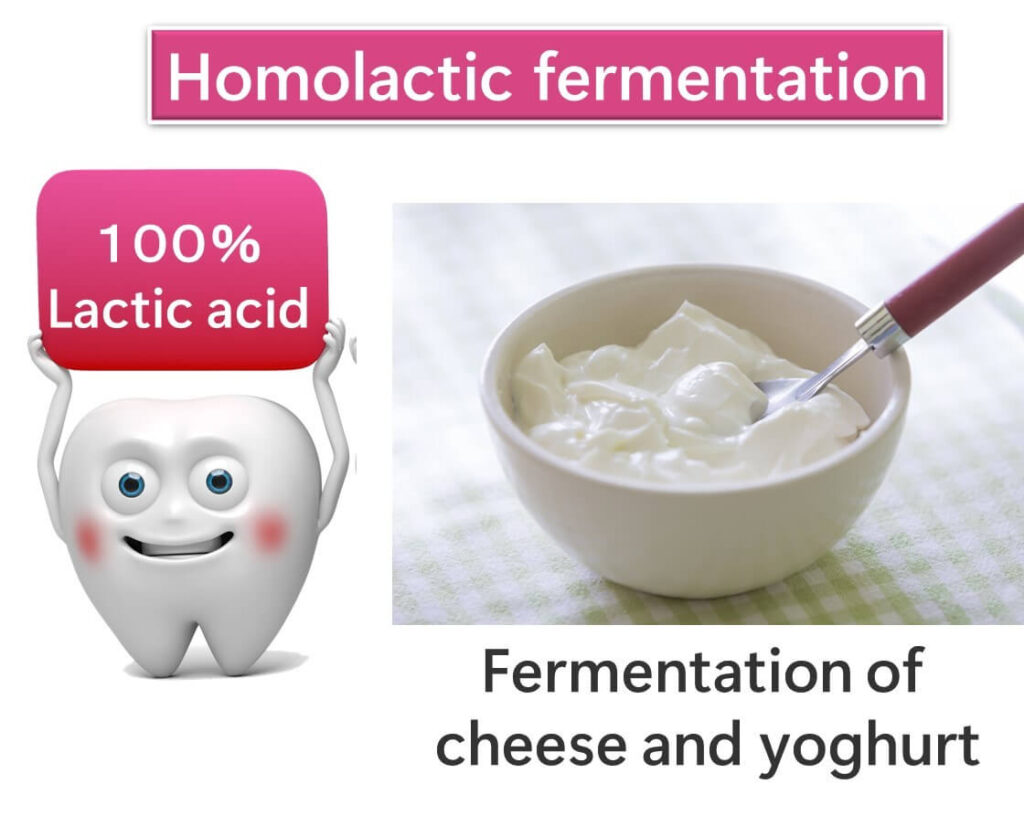
Now, it's important to note that lactic acid fermentation isn't limited to dairy products. It extends its reach to other areas as well. For instance, you can find lactic acid bacteria even on the surfaces of vegetables, and these bacteria demonstrate resistance to salt. As a result, when vegetables are preserved in a salt solution, lactic acid bacteria can thrive and initiate lactic acid fermentation. This process leads to a drop in the pH of the pickling solution, making the pickles tangy and sour.
So, whether it's sauerkraut, kimchi, or other pickled vegetables, you can thank lactic acid bacteria for the deliciously sour taste. They play a vital role in preserving these foods and giving them their distinctive flavors, all thanks to the magic of lactic acid fermentation.
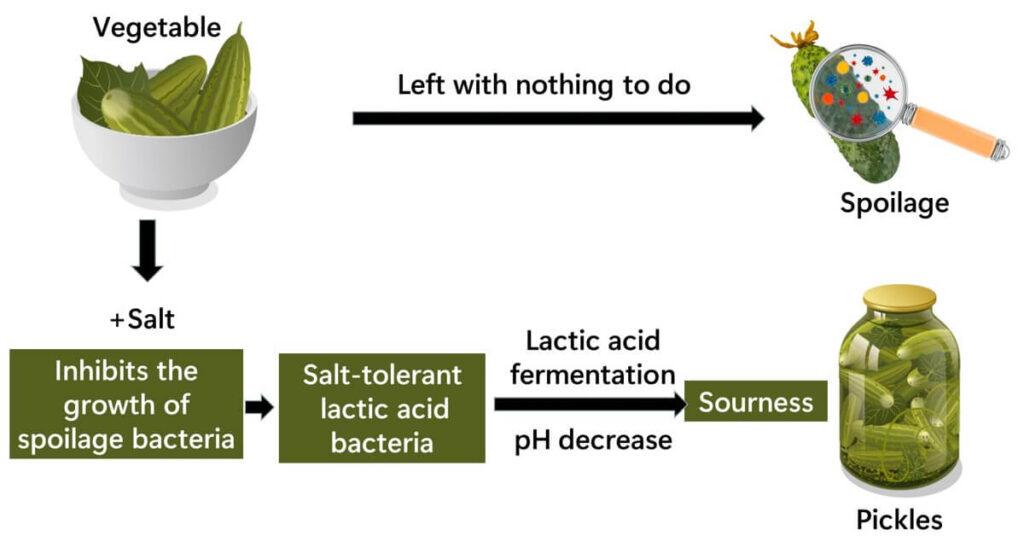
However, it's worth mentioning that not all homofermentative lactic acid bacteria are considered 'good' lactic acid bacteria. As discussed in a separate article, some homofermentative lactic acid bacteria are known as spoilage lactic acid bacteria. So, being homofermentative doesn't necessarily mean a bacteria strain is beneficial.
Now, let's shift our focus to the other group of lactic acid bacteria known as heterofermentative lactic acid bacteria. Unlike their homofermentative counterparts, these bacteria don't stop at producing lactic acid from glucose during fermentation. They go a step further and produce other compounds like carbon dioxide and acetic acid. Because they generate not only lactic acid but also carbon dioxide and acetic acid, when these bacteria thrive in food, it can lead to issues like gas production and increased acidity, resulting in changes in the taste and texture of the food.
So, it's important to note that heterofermentative lactic acid bacteria can contribute to food spoilage. This is a significant concern in the food industry, and you can find more detailed information about it in a separate article.
Lactic Acid Bacteria: More Than Just Beneficial Bugs in Foods
